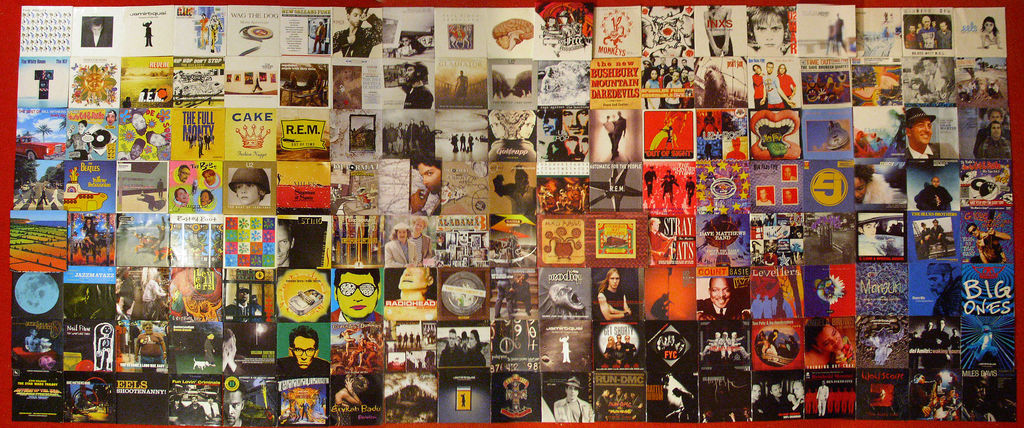In times when music is becoming more digital, not only the artists but many other people in the chain of production have to suffer financially from the side-effects of digitization. But one character in this story has silently disappeared from stage and no longer gets discussed: the CD booklet. What was once a crucial part in the production of an album, turning musical impressions into visually recognizable symbols, has all but vanished in the age of digitized music. But over the past century, numerous album covers have turned into famous imagery which fans use as a personal statement.
Here Today, Gone Tomorrow
Most musicians spend days and nights wondering about the finer details of the music and performance, but don’t spend too much thought over designing the album artwork. This is only natural if you consider that they are musicians in the first place and not graphic designers. However, no artist can afford to be negligent about the artwork on his or her album’s cover. With quality online printing companies like print24, which offers a special printing service for brochures and booklets, it has never been so easy to create your own professional album artwork. As a marketing instrument, the cover design is a key factor for pushing sales, because it is the first impression listeners get of the artist’s work, and thus an important chance to stand out. When searching for new music amidst the universe of CDs in a record store, buyers will remember the one cover that was different form the rest.
But what makes a CD’s artwork successful? There are different approaches to choosing an adequate visual representation of a musical work. Traditionally, the cover art features pictures of the artists and sometimes their instruments. Famous examples include Michael Jackson’s “Thriller” or Miles Davis’ “Kind of Blue”. But with the emergence of graphic design, the variety of options for cover designs has become almost infinite. An interesting case is Pink Floyd’s famous “Dark Side of the Moon” which shows the image of a triangular prism that disperses light into colour. The ray of light continues all over the booklet and turns into a visual representation of a heartbeat that repeatedly appears in Pink Floyd’s songs. Being part of a concept album, the image of the prism should represent the band’s light show as well as their lyrics.
Another example of how a minimalist design can reach global fame is “Unknown Pleasures” by Joy Division. Looking like an arrangement of lines, this famous artwork is in fact based on radio waves by a pulsar, an astronomical phenomenon that can be described as a rotating neutron star. Today, the front image is a worldwide classic that is being printed on shirts and bags and that you can spot at any music event.
The Beatles’ “Abbey Road” is another famous example of how a CD cover can turn into a high recognition value for both the artists and their music. Not only did “Abbey Road” cause thousands of tourists to make a pilgrimage to the zebra crossing in London, it also triggered the “Paul is dead” conspiracy theory, which stated that Paul McCartney had died prior to the release of “Abbey Road”. Various details on the zebra crossing picture allegedly hint at the death of McCartney.
While the cover artwork is the most iconic and recognizable part of the booklet, the entire brochure is usually thought to be much more than just a nice picture and a little extra space to place the producer’s name. At best, it represents the genre and reflects the musical message of the band. CD booklets can also retrace the story of the album, giving insights into how the songs have been written, produced or altered during the process and where the inspiration for the music came from. Booklets add an extra value to concept album, taking the music into the visual and literary sphere. It is a sad story therefore that there seems to be no place for them anymore in the digital world.





